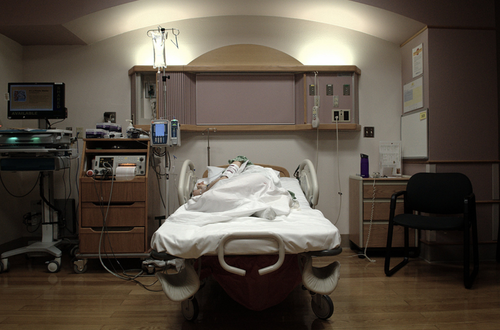Caesarean
The C-Section Risk No One Is Talking About
Michele Zipp
March 20, 2014
http://thestir.cafemom.com

C-sections are a risky way to birth. This we know. There are facts. It is
major surgery. But there are still many women who end up with a cesarean. Too
many. The c-section
rates have risen to an alarming rate (nearly 30 percent) -- far beyond what
even the respected medical community feels appropriate.
We all know the risks, but there is one risk that we don't
talk about enough. It's the risk involving your placenta and its ability
to kill you. Repeat c-sections increase that risk.
Chavi Karkowsky, a specialist in maternal fetal medicine,
wrote a fantastic day-in-the-life essay of what
it's like to be an OBGYN. She details a meeting with the obstetrics team
involving everyone from urology ("because the bladder is right next to the
uterus") to the neonatal intensive care unit in the event baby needs additional
care. Also there are members of the blood bank and anesthesiology "because
they’re in charge of keeping the mom and fetus alive during the surgery."
When it's put this way, doesn't a c-section
sound scary? People don't like to think about the whole process and instead
just think it's a procedure and done -- baby is born. Mama gets stitches and a
scar. Life goes on.
But Dr. Karkowsky's concern in this meeting is due to the
fact the mother they are preparing to perform a c-section on has placenta accreta,
which means the placenta isn't growing as it should and is instead growing too
much, spreading through the line of the uterus. The placenta -- the life force
feeding our babies when they are in our wombs -- can also be seen as a parasitic
organ, and if something goes wrong, it can really go wrong and even kill us. Dr.
Karkowsky says:
There’s an obvious metaphor here, of course, about
pregnancy and motherhood, and how they can devour a woman from the inside. But
the setup for a placenta accreta often starts long ago, with a prior pregnancy.
The other metaphor is that we carry some of the choices that we make forever,
and some of them we never heal from entirely.
If you have had a c-section and decide to have another
child, your risk of placenta accreta rises. It's due to our c-section scar.
Placentas sometimes gravitate toward a prior surgical site. They can become
abnormally implanted and as Dr. Karkowsky notes:
... with each cesarean section, the risk becomes higher.
There is something about the way that scars heal that means that the delicate
boundary between inside and outside the uterus becomes disrupted and lays the
foundation for future abnormal placental growth. There’s no risk-free way out of
any pregnancy. Some of the risks we see now. Some of them don’t become clear
until future pregnancies. Let’s discuss them and make the right decision for
your whole reproductive life.
This is one of the many reasons this kind of information
needs to be heard by every woman. We cannot let doctors insist on a c-section
because not only can that birth become more dangerous, each subsequent birth
does as well.
Were you aware of this c-section risk? Have you heard of
placenta accreta?
